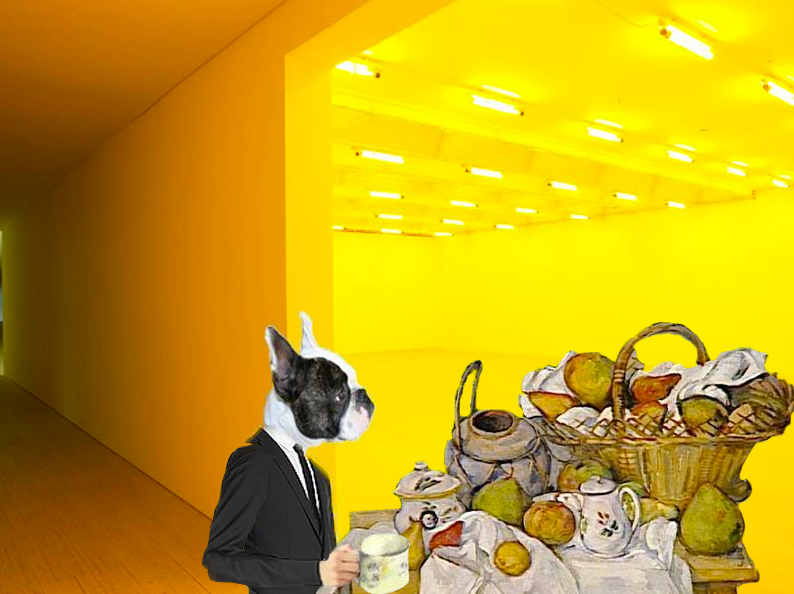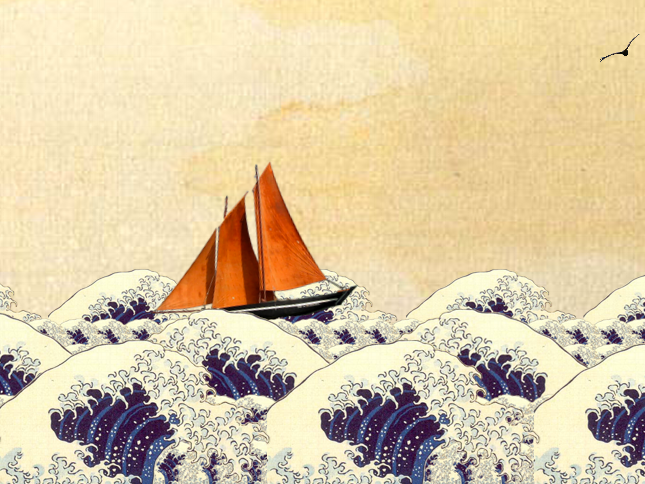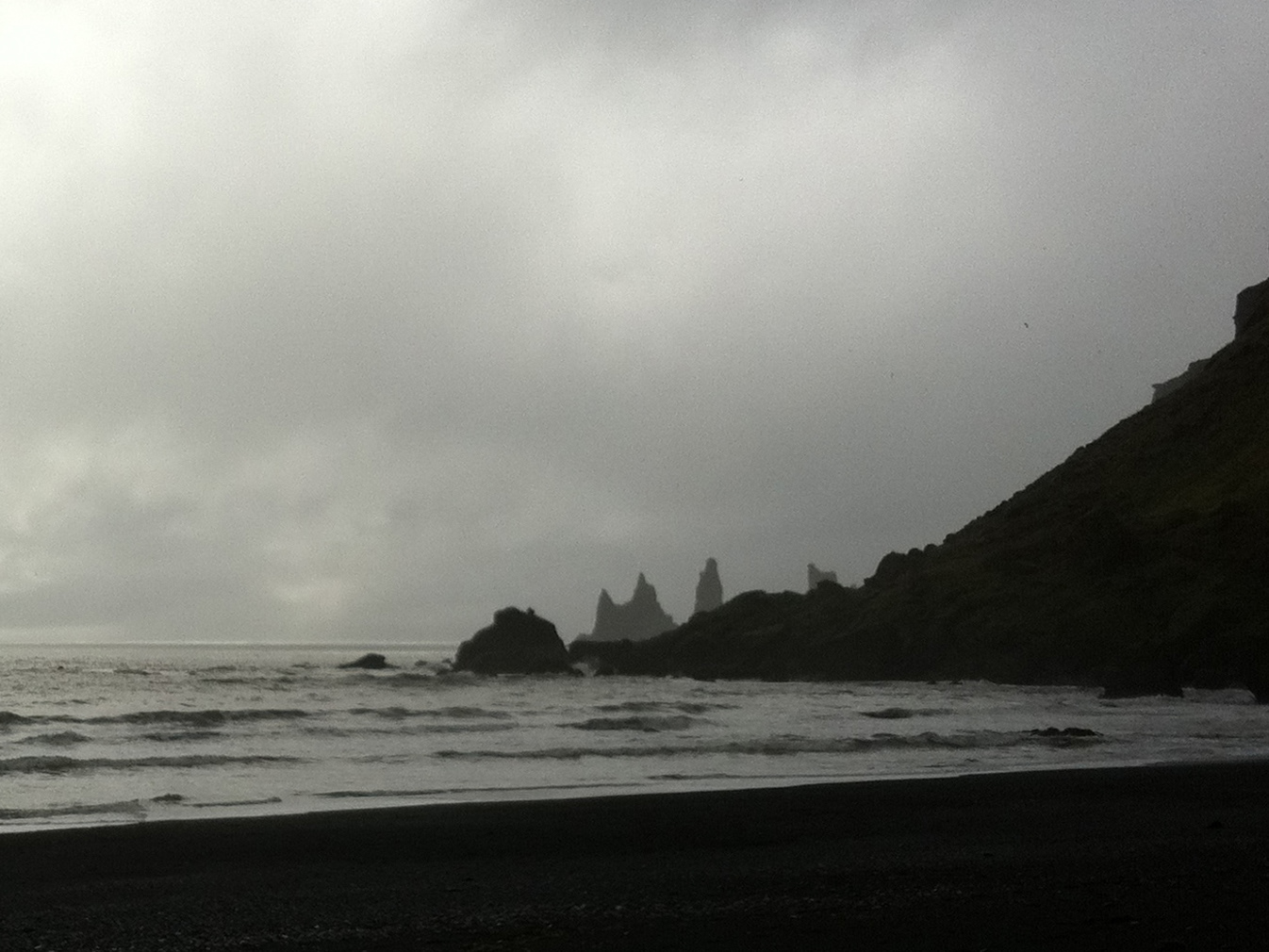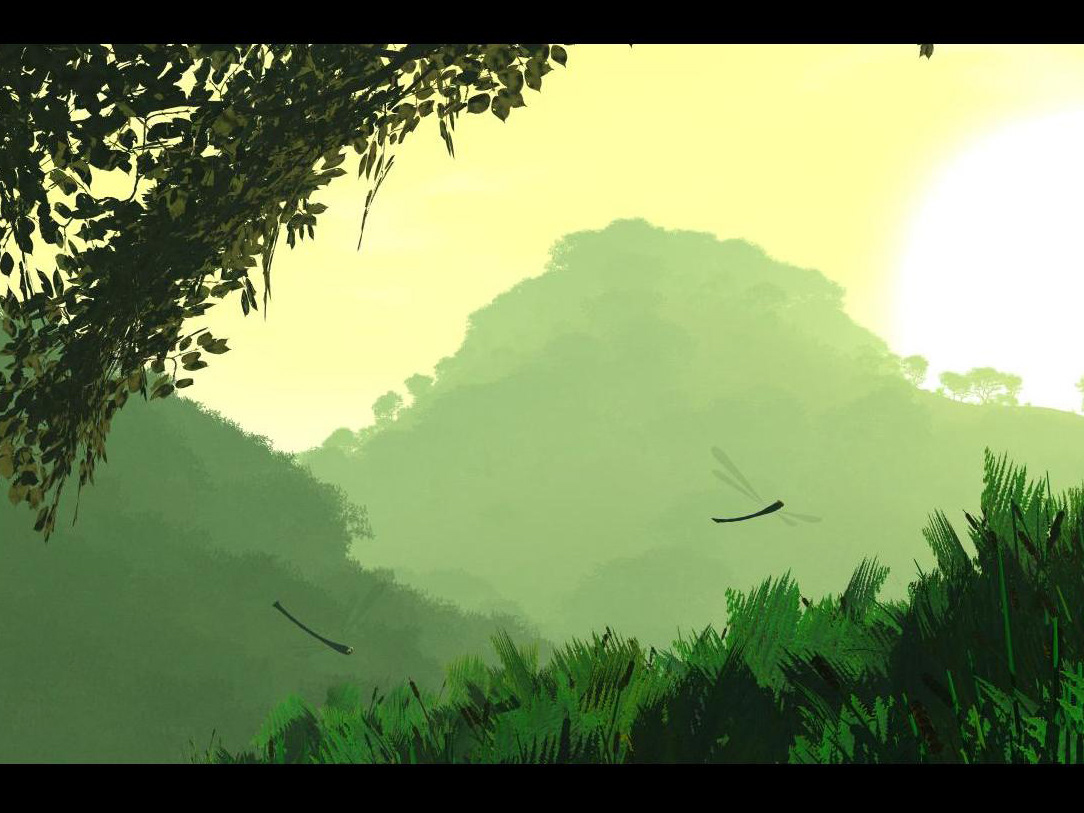Synaesthetic Landscape is an interactive animation, where elements of a small poetic landscape grow and evolve in real-time in relation to the music and the user’s actions. The installation includes a tangible interface in the form of a spherical organic element, filled with an Arduino and sensors. The user can play with it via four possible interactions, which follow conceptual metaphors:
Change the day/night cycle by rotating the base of the gourd, which would rotate the sun or moon in the sky. The movements are monitored by a potentiometer is the base of the gourd.
Add some clouds by placing a hand above the gourd, in a gesture that darkens a light-sensitive resistor and that also evokes the physical position of clouds above the landscape.
Add rain by gently tapping the side of the gourd (even if not so obvious, it was for me an equivalent of the rain falling and hitting the ground). The tapping is detected by one of the piezo element.
Add wind by blowing in the gourd. Detection is done by a small piezo element inside.
At the same time, natural elements grow and change in real-time with the music (which can be any track chosen by the user).
The audio-visual mappings give an impression of rhythmic and melodic cohesion between sounds and visuals but without giving clues to easily. The fact that some relations between elements are not clear, without giving a feeling of randomness, is what mattered to me.
I made the visuals using Photoshop and paintings from Monet, Klee and van Gogh, animation with Processing, physical computing with Arduino software and hardware, and used an empty greek gourd for the interface.
Music from Tom Kerstens’ G Plus ensemble.
Change the day/night cycle by rotating the base of the gourd, which would rotate the sun or moon in the sky. The movements are monitored by a potentiometer is the base of the gourd.
Add some clouds by placing a hand above the gourd, in a gesture that darkens a light-sensitive resistor and that also evokes the physical position of clouds above the landscape.
Add rain by gently tapping the side of the gourd (even if not so obvious, it was for me an equivalent of the rain falling and hitting the ground). The tapping is detected by one of the piezo element.
Add wind by blowing in the gourd. Detection is done by a small piezo element inside.
The tangible interface is an organic sphere connected to the computer and filled with sensors: an arduino, a potentiometer, a light-dependent resistor and two piezo elements. Here I removed the base, so that we can see the wooden part inside which the potentiometer is fixed and the Arduino just above, inserted in the gourd.
Inside the gourd, we can see the small black box containing the piezo for the detection of the wind on the left, and the piezo used for the tapping detection on the top right. The light-dependent resistor is right in the middle, hidden by the wires.







